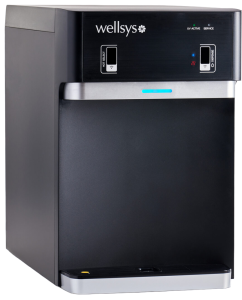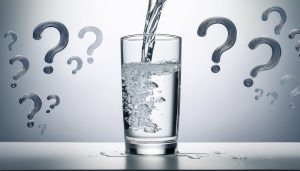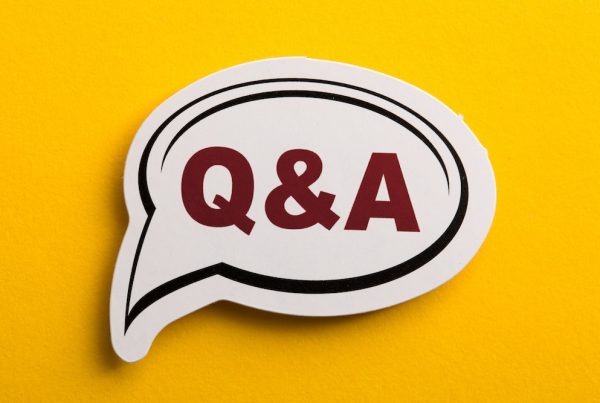When was the last time you thought about the water coming out of your office tap or water cooler? If you’re like most people, probably never. We turn the handle, fill our glass, and assume everything’s fine. But here’s the thing: that assumption might be putting your team’s health at risk.
Whether your office relies on tap water or traditional water coolers, each option comes with its own set of problems. Tap water can carry contaminants from old pipes, while bottled water systems create perfect breeding grounds for bacteria. Both can expose your employees to health hazards you probably didn’t know existed.
The good news? There’s a better way forward. Modern bottleless water systems are changing how businesses in Western and Central New York think about workplace hydration. Let’s dive into what’s really in your office water supply and why it might be time for an upgrade.
What’s Really in Your Workplace Water?
Those five-gallon water jugs sitting in your office might look clean, but they’re actually creating the perfect environment for unwanted guests. Once a bottle is opened, bacteria can start growing within days. Traditional water coolers also have reservoirs and tubing where biofilm, a slimy layer of bacteria, loves to form.
Pathogens like E. coli and Legionella can seriously harm your employees. The CDC reports that millions of Americans are exposed to waterborne pathogens each year, with Legionella being one of the most common culprits in workplace outbreaks. That’s not a risk worth taking when there are better alternatives available.
Heavy Metals from Aging Infrastructure
If your building was constructed before 1986, there’s a good chance lead pipes are still part of the water system. Even newer buildings can have issues with copper pipes that leach metals into the water supply over time. The EPA estimates there are still over 9 million lead service lines in use across the country, many serving commercial buildings.
Here’s what makes this particularly concerning: you can’t taste, smell, or see these contaminants. Employees could be drinking contaminated water for months or years without knowing it. Long-term exposure to lead and copper can cause kidney damage, developmental problems, and other serious health issues that don’t show up immediately.
The Microplastics Problem
Recent research from Columbia University found that the average liter of bottled water contains about 240,000 tiny pieces of plastic. Most of these are nanoplastics, particles so small they can potentially enter human cells.
We’re still learning about the long-term health effects of microplastics in our bodies, but early research suggests they could cause inflammation and other cellular damage. For offices still relying on bottled water delivery, this represents an entirely avoidable risk.
Mold, Slime, and That Weird Taste
Ever notice that your office water sometimes tastes “off” or has a strange smell? That’s often mold or bacterial growth in the cooler’s reservoir. Traditional water dispensers need constant cleaning and sanitization, but how often does that actually happen in most offices?
When bottles are changed incorrectly or reservoirs aren’t cleaned regularly, mold and slime build up inside the system. This doesn’t just affect taste; it can also discourage employees from drinking enough water throughout the day, leading to dehydration and decreased productivity.
Hygiene Concerns in Shared Spaces
Think about how many hands touch your office water cooler each day. Shared cups, frequently-touched spigots, and poorly maintained dispensers become germ highways, especially during cold and flu season. In an era where businesses are investing in touchless technology everywhere else, old-fashioned water coolers feel particularly outdated.

The Real Cost of Water Problems
It’s easy to think of water quality as just a health concern, but the ripple effects reach much further. Here are some of the hidden costs that come with ignoring water problems.
Productivity Takes a Hit
Even mild dehydration, the level where people just start feeling thirsty, can significantly impact cognitive function. Research shows it leads to difficulty concentrating, memory problems, and mood changes. When employees don’t trust their office water supply, they’re more likely to become dehydrated, which directly affects their work performance.
Employee Morale and Trust
When workers don’t trust the water at their workplace, they vote with their wallets. They’ll buy beverages from vending machines or coffee shops instead. Over time, this sends a subtle but clear message: the company doesn’t prioritize their basic needs. It’s a small thing that can have a surprisingly big impact on workplace culture.
Financial Waste Adds Up
The average cost of five-gallon bottled water runs about $1.20–$1.80 per gallon when you factor in delivery fees, handling, and storage. That might not sound like much, but it adds up quickly for larger offices. Plus, there are hidden costs: employee time spent handling heavy bottles, storage space requirements, and the inevitable service calls when dispensers break down.
Compliance and Liability Issues
OSHA requires employers to provide safe, potable drinking water to their employees. If your current water system isn’t meeting that standard, you could face compliance issues down the road. More importantly, if an employee gets sick from contaminated workplace water, the liability implications could be significant.
Why Bottleless Systems Make Sense
Bottleless water systems work differently than traditional setups. Instead of relying on stored water, they connect directly to your building’s water line and filter water on demand. This eliminates most of the problems we’ve discussed while providing several additional benefits.
Advanced Filtration That Works
Modern bottleless systems use multi-stage filtration to remove chlorine, lead, sediment, bacteria, and other contaminants. Many include ultraviolet sterilization for an extra layer of protection against microbial growth. The result? Employees get fresh, clean water every time they fill their glass: no stagnant reservoirs, no bacterial growth, no guesswork about water quality.
The Math Makes Sense
Filtered water systems often cost far less per gallon than bottled delivery, and the savings add up quickly. Instead of paying by the jug, and covering delivery fees, deposits, and cooler rentals, businesses with bottleless systems pay only for routine filtration and maintenance. Over time, that usually works out to just pennies per gallon.
The real value goes beyond the price of the water itself. With a bottleless system, there are no heavy bottles for staff to lift, no storage space tied up with empty containers, and no interruptions from delivery schedules. Everything runs automatically, so employees stay focused on their work rather than managing water service.
Environmental Benefits That Matter
Each bottleless unit can eliminate approximately 7,000 plastic bottles or 150 five-gallon jugs annually. That’s a significant reduction in plastic waste, plus the carbon emissions associated with manufacturing, transporting, and disposing of those containers.
For companies working on sustainability goals, this represents a tangible way to reduce environmental impact while improving operations. It’s one of those rare win-win situations where doing the right thing for the environment also saves money.
Improved Hygiene and Convenience
Modern bottleless dispensers often include touchless operation, reducing the spread of germs between employees. Since water is filtered on demand, there are no reservoirs where bacteria can grow and no heavy bottles to lift or store. Maintenance is minimal; just periodic filter changes and routine sanitization.
OSHA Compliance Made Simple
With consistent filtration and fresh water on demand, bottleless systems make OSHA compliance straightforward. You don’t have to worry about water quality varying between deliveries or bacterial growth. The system ensures consistent, safe water quality day after day.

Touch-free W9+CT
Making the Switch: What to Expect
The transition to bottleless water is usually straightforward. Most systems can be installed during regular business hours with minimal disruption. Service providers typically handle the installation process, including connecting to your water line and ensuring proper filtration setup.
Many businesses report that water consumption actually increases after installing bottleless systems because the water tastes better and employees trust the quality.
The Bottom Line
Your office water supply might seem like a small detail, but it affects your employees every day. From health risks like bacteria and heavy metals to productivity impacts from dehydration, the stakes are higher than most people realize.
Bottleless water systems offer a practical solution that addresses these concerns while reducing costs and environmental impact. They provide consistent water quality, eliminate storage and delivery hassles, and send a positive message about your company’s commitment to employee wellbeing.
The question isn’t whether you can afford to upgrade your water system; it’s whether you can afford not to. With potential health risks, compliance requirements, and employee satisfaction on the line, the investment in better water quality pays dividends that go far beyond the monthly service fee.
Your employees deserve clean, safe water. More importantly, your business deserves the productivity, cost savings, and peace of mind that comes with providing it.
About Us
Pure Water of Western and Central New York has proudly served over 1,000 customers with high-quality water and ice purification systems since 2008. As a locally owned, family-run business, we take pride in building lasting relationships with the communities we serve. Our commitment to clean, great-tasting water and outstanding service has earned us national recognition, including multiple awards from Wellsys for top-tier performance. As a certified MWBE (Minority and Women Owned Business Enterprise) and a supporter of Cradle Beach—an organization dedicated to providing memorable experiences for children with disabilities and special needs—we’re passionate about promoting inclusion, giving back to our community, and delivering environmentally responsible solutions that make a difference every day.




